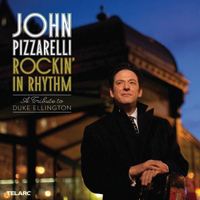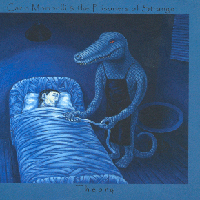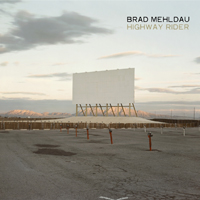From Abdullah Ibrahim to Brad Mehldau, M&G staffers review the latest musical offerings.
Abdullah Ibrahim & WDR Big Band, Cologne: Bombella (Sony) 
Following on from Abdullah Ibrahim’s critically lauded 2008 album, Senzo, comes Bombella. While Senzo was a solo piano album, Bombella was recorded with the Grammy award-winning WDR Big Band from Cologne.
It is dedicated to arranger Steve Gray who assisted Ibrahim with the recording in 2008 but died before Ibrahim and the WDR Big Band recently toured South Africa to perform the song cycle.
The mesmerising opener Green Kalahari is a beautiful solo piano piece, whereas Song for Sathima, which follows, practically explodes into life thanks to some gorgeous saxophone work by Heiner Wiberny and Jens Neufang.
It was at this point that I began to realise that this new album from Ibrahim is sheer class.
The title track, Bombella, is based on Ibrahim’s experiences of riding the trains used by migrant mine workers in South Africa and is vital and alive on the album’s arrangement.
The performance of Thelonious Monk’s I Mean You, which segues into Ibrahim’s own tribute to Monk titled For Monk, is another highlight, and Ibrahim’s tribute to Duke Ellington trombonist Lawrence Brown, For Lawrence Brown (Remembrance), is a sombre masterpiece.
Add to that the marabi-swing of Mandela and the propellant African River and Bombella shapes up as one of Ibrahim’s finest works of late. — Lloyd Gedye
John Pizzarelli: Rockin’ in Rhythm (Sheer Sound) 
John Pizzarelli is establishing a name for himself as a tributes musician. Rockin’ in Rhythm, an ode to composer and jazz musician Duke Ellington, follows other tribute albums the singer-guitarist has done for Frank Sinatra, Nat King Cole and the Beatles. This tribute is so accomplished that it was nominated for best jazz vocal album at the 2010 Grammy awards.
The CD begins with the rather hypersonic In a Mellow Tone, which begins on a vocal note before meandering away into luxuriant and deft guitar work. From there it stops at the meditative East St Louis Toodle-oo/Don’t Get Around Much Anymore, two Ellington classics that have been seamlessly joined.
Other notable tracks include the mellow love ballad, In My Solitude, which is sung against the background of a resonant bass that’s lightly caressed with echoes of guitar-based melody.
Track number eight All Too Soon works to create a bluesy and savoury mood, a feeling replicated in the ballad Love Scene. Pizzarelli was determined to finish the CD on a high, thus he has the vibrant instrumental Cottontail/Rockin’ in Rhythm as the last track.
It’s an accomplished CD featuring great vocals, touching lyrics, nimble fingers on the guitar and moving saxophone solos. — Percy Zvomuya
Carlo Mombelli and the Prisoners of Strange: Theory (Independent) 
Watching a performance by Carlo Mombelli and the Prisoners of Strange is to be taken on a fascinating, lyrical and sometimes odd journey through unorthodox timing and enthralling headspace.
Listening to them on Theory is also a journey, but in a different way — here you won’t have the beautiful distractions of the performance itself, but instead you’re left alone with the force of the music. And what music. It’s described on their official site as “spontaneous freestyle chamber jazz”, which gives you a small clue.
The Prisoners are master bass player Mombelli, acclaimed and eclectic trumpeter Marcus Wyatt (get his superlative 2006 release, Language 12), drummer Justin Badenhorst and voice artist Siya Makuzeni. Together they play jazz that’s as experimental as it’s rooted in tradition and as entertaining as it’s intriguing.
A track like joburg-downpipe-gutter-bows, for example, makes use of found instruments such as the eponymous gutter bow (at least I assume it’s not a regular instrument), as well as the unbelievable voice of Makuzeni, to create a sound that’s got a rocking rhythm to move you along, but also an arresting dissonance to interrupt your ease.
Sonic design collective improvisation — fire is probably more the sort of free jazz that you’d associate with the avant-garde, a gloriously rampaging soundscape with some frenziedly tamped-down wind improvisation. But there’s melody as well as fire on Theory, one of those albums that demands to be listened to as a whole, each piece reading off the other to produce music of lovely genius. — Chris Roper
Brad Mehldau: Highway Rider (Gallo) 
Brad Mehldau’s poignant double album Highway Rider is a grand escape based on the theme of travel. The package presents the work as a sojourn steeped in meaning. On the CD cover there’s an empty drive-in, in daylight, the blank white screen suggesting a yet-to-be-had experience. But Mehldau’s music, sweeping and evocative, also speaks of nostalgia. In John Boy, the opening track, one can almost hear a train in the distance as it goes on its way — long, strained notes sound like hooters and rhythmic, soft clatter evokes a feeling of distant passing. The beauty of the album is heightened by the full, poignant orchestration under Dan Coleman. And, although there are atonal moments that make one think of modernist classics (for example, on Now You Must Climb Alone), there are also times when the band, which includes Josh Redman on saxophone, does things that remind one of the heyday of Carla Bley. On the track Don’t Be Sad there’s a bit of crazy waltzing that rekindles the entertainments of old. Otherwise the album is sad and cinematic, and deeply satisfying. — Matthew Krouse